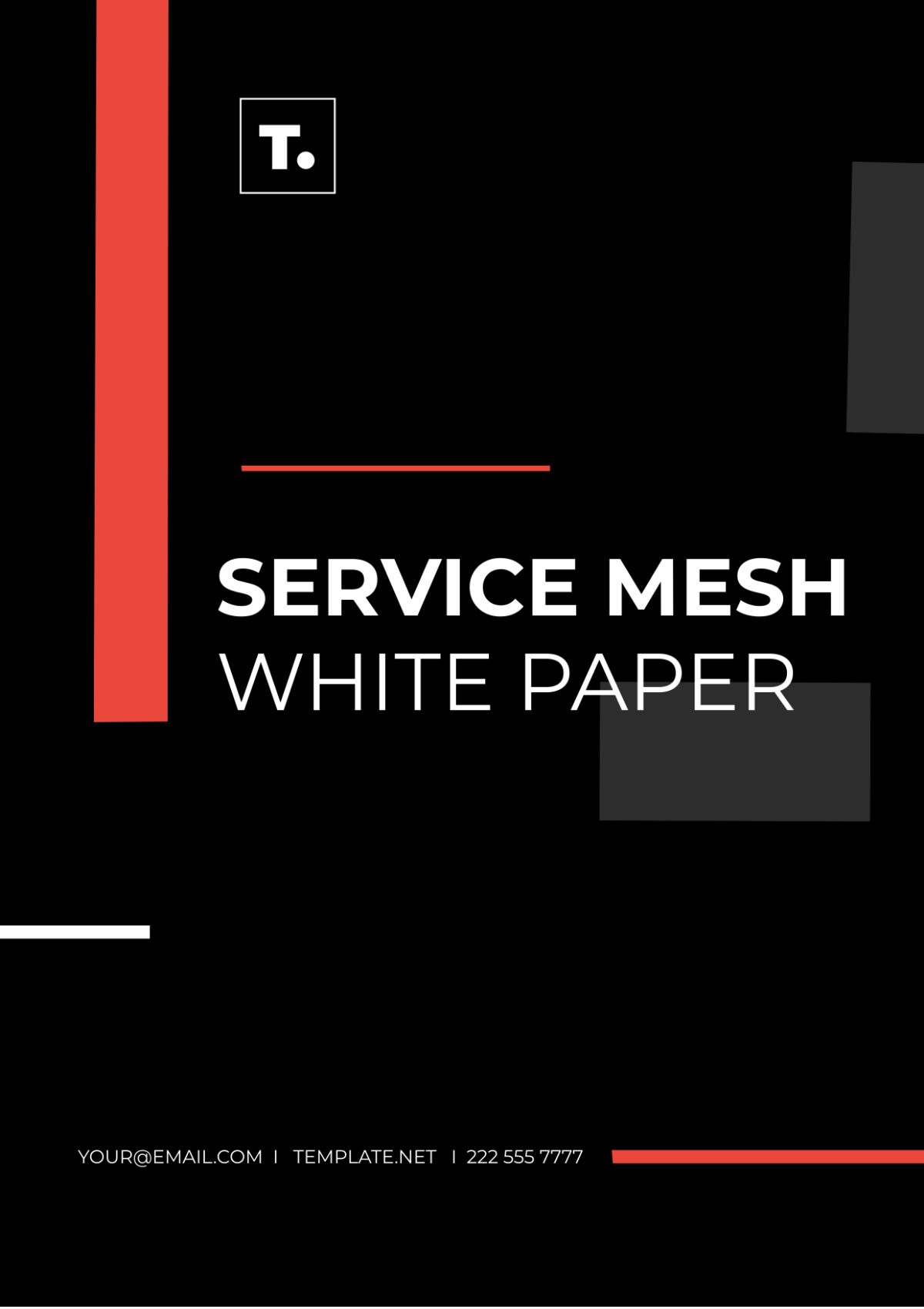Free Service Mesh White Paper

Prepared by: [Your Name]
For: [Your Company Name]
Date: [DATE]
Department: [YOUR DEPARTMENT]
I. Executive Summary

The Service Mesh White Paper serves as a comprehensive guide to understanding and implementing service mesh technology in contemporary IT environments. It delves into the intricacies of service mesh architecture, highlighting its benefits, implementation strategies, best practices, and potential challenges.
II. Introduction to Service Mesh
Discuss the fundamental concepts of service mesh, including its definition, components, and role in microservices architecture.
A. What is Service Mesh?
A service mesh is a dedicated infrastructure layer that handles communication between microservices within a distributed application. It consists of a network of proxies and control planes that facilitate secure and efficient communication among services.
B. Components of Service Mesh
The key components of a service mesh include sidecar proxies, control planes, and data planes. These components work together to manage traffic, enforce policies, and provide observability into microservices interactions.
C. Benefits of Service Mesh
Implementing a service mesh offers several benefits, such as:
Improved Observability: Gain insights into service-to-service communication, latency, and error rates.
Enhanced Security: Enforce encryption, authentication, and authorization policies for secure communication.
Dynamic Routing: Implement traffic management strategies like load balancing and circuit breaking.
Resilience: Handle failures gracefully through retry mechanisms and automatic service discovery.
III. Implementing Service Mesh
Provide guidance on how organizations can implement and integrate a service mesh into their existing infrastructure.
A. Choosing a Service Mesh Solution
When selecting a service mesh solution, consider factors such as feature set, scalability, community support, and compatibility with your existing technology stack. Popular options include Istio, Linkerd, and Consul.
B. Implementation Strategies
To successfully implement a service mesh, follow these strategies:
Define Service Boundaries: Identify microservices and their communication patterns.
Deploy Sidecar Proxies: Attach sidecar proxies to each microservice instance for traffic management.
Configure Control Plane: Set up control plane components for policy enforcement and observability.
Integrate with Orchestration Tools: Integrate the service mesh with container orchestration platforms like Kubernetes for seamless management.
C. Integration with Existing Systems
Integrating a service mesh with existing systems involves:
Legacy Application Support: Ensure compatibility with legacy applications through protocol translation and adapter patterns.
Containerization: Containerize applications for easier deployment and management within the service mesh environment.
IV. Best Practices for Service Mesh

Offer recommendations and best practices for effectively managing and optimizing a service mesh environment.
A. Traffic Routing and Load Balancing
Implement traffic routing rules and load balancing strategies based on service-level objectives (SLOs) and performance metrics. Use features like weighted routing and traffic splitting for controlled deployments.
B. Security and Identity Management
Enforce security policies using mutual TLS encryption, role-based access control (RBAC), and service identity management. Regularly audit and rotate cryptographic keys for enhanced security.
C. Observability and Monitoring
Leverage service mesh features for improved observability, including:
Metrics Collection: Collect metrics such as request rates, response times, and error rates.
Logging: Aggregate logs from proxies and services for troubleshooting and analysis.
Distributed Tracing: Trace requests across microservices for end-to-end visibility into application performance.
V. Challenges and Considerations
Address common challenges and considerations organizations may encounter when adopting a service mesh architecture.
A. Complexity and Overhead
Managing a service mesh introduces complexity in terms of configuration, maintenance, and troubleshooting. Organizations must invest in training and tooling to manage this complexity effectively.
B. Performance Implications
Service mesh proxies add latency and overhead to network communication. Optimize proxy configurations and monitor performance metrics to mitigate performance impacts.
C. Maintenance and Upgrades
Regularly update service mesh components to incorporate bug fixes, security patches, and new features. Develop automated deployment pipelines for seamless upgrades and rollback procedures.
VI. Case Studies and Success Stories
Share real-world case studies and success stories of organizations that have successfully implemented and benefited from a service mesh.
A. [Your Company Name] Case Study
[Your Company Name] implemented Istio service mesh to improve application scalability and reliability. By leveraging Istio's traffic management features, they achieved smoother deployments and reduced downtime.
B. Industry Success Stories
Other companies in the industry, such as XYZ Enterprises and ABC Technologies, have also experienced significant improvements in agility and resilience after adopting service mesh solutions tailored to their specific use cases.
VII. Conclusion

The Service Mesh White Paper provides valuable insights into the transformative potential of service mesh technology. By following the best practices outlined in this white paper, organizations can unlock greater agility, security, and scalability in their microservices architecture.
- 100% Customizable, free editor
- Access 1 Million+ Templates, photo’s & graphics
- Download or share as a template
- Click and replace photos, graphics, text, backgrounds
- Resize, crop, AI write & more
- Access advanced editor
Access the Service Mesh White Paper Template on Template.net for insightful service mesh discussions. This editable template aids businesses in presenting service mesh architectures and benefits effectively. Customize the white paper effortlessly using our AI Editor Tool, ensuring clear and comprehensive service mesh insights. Simplify your service mesh communication with this professional and user-friendly template.





























